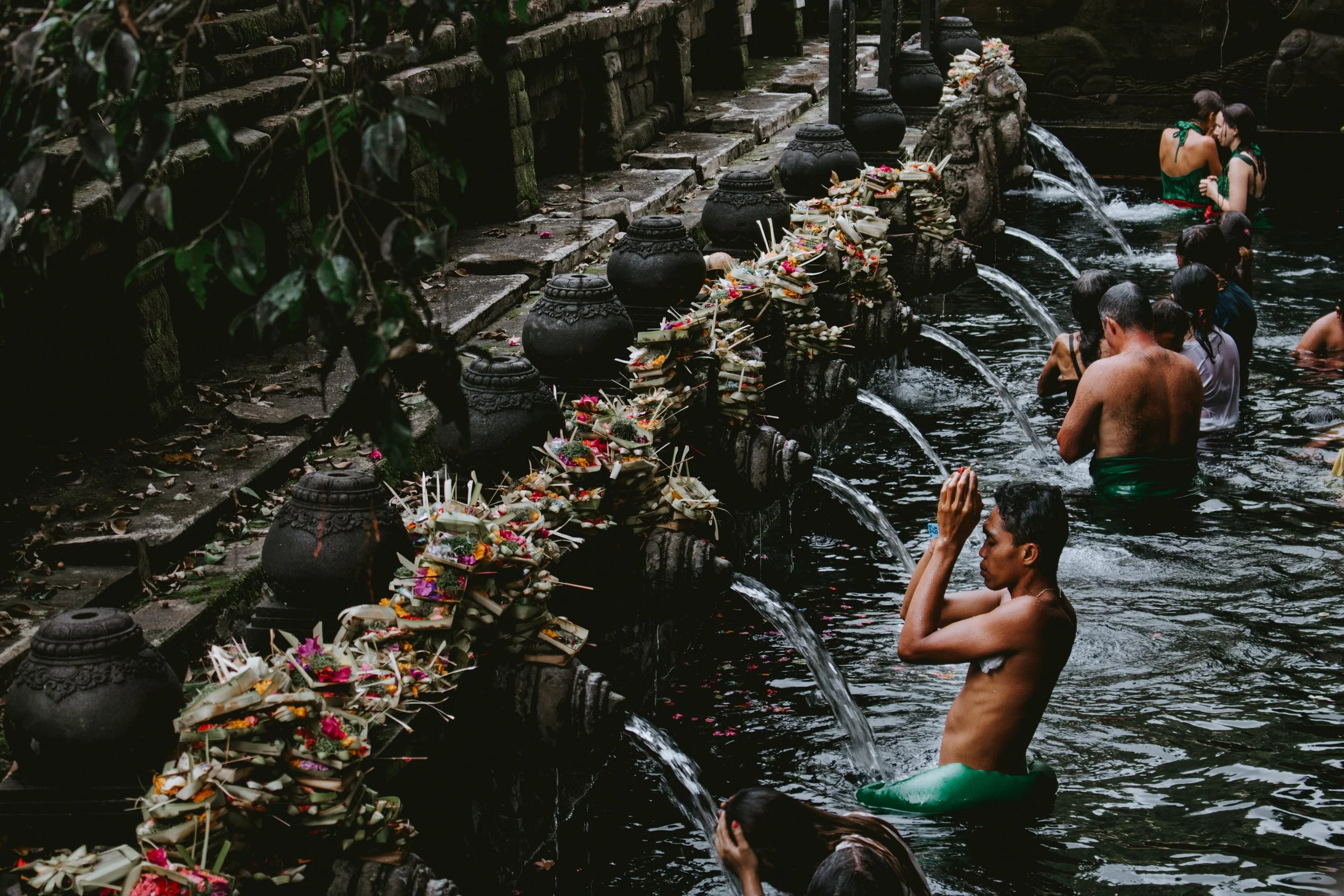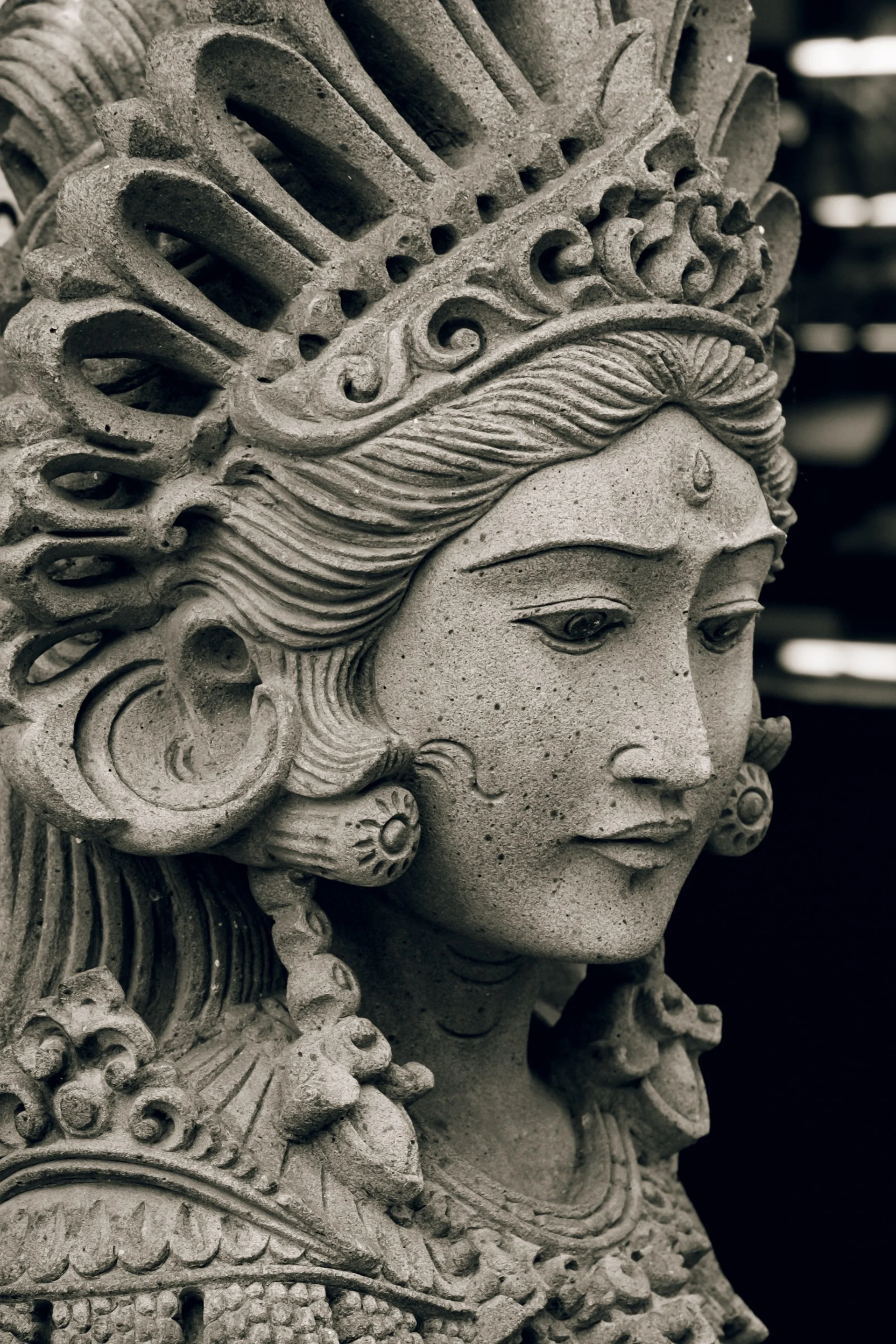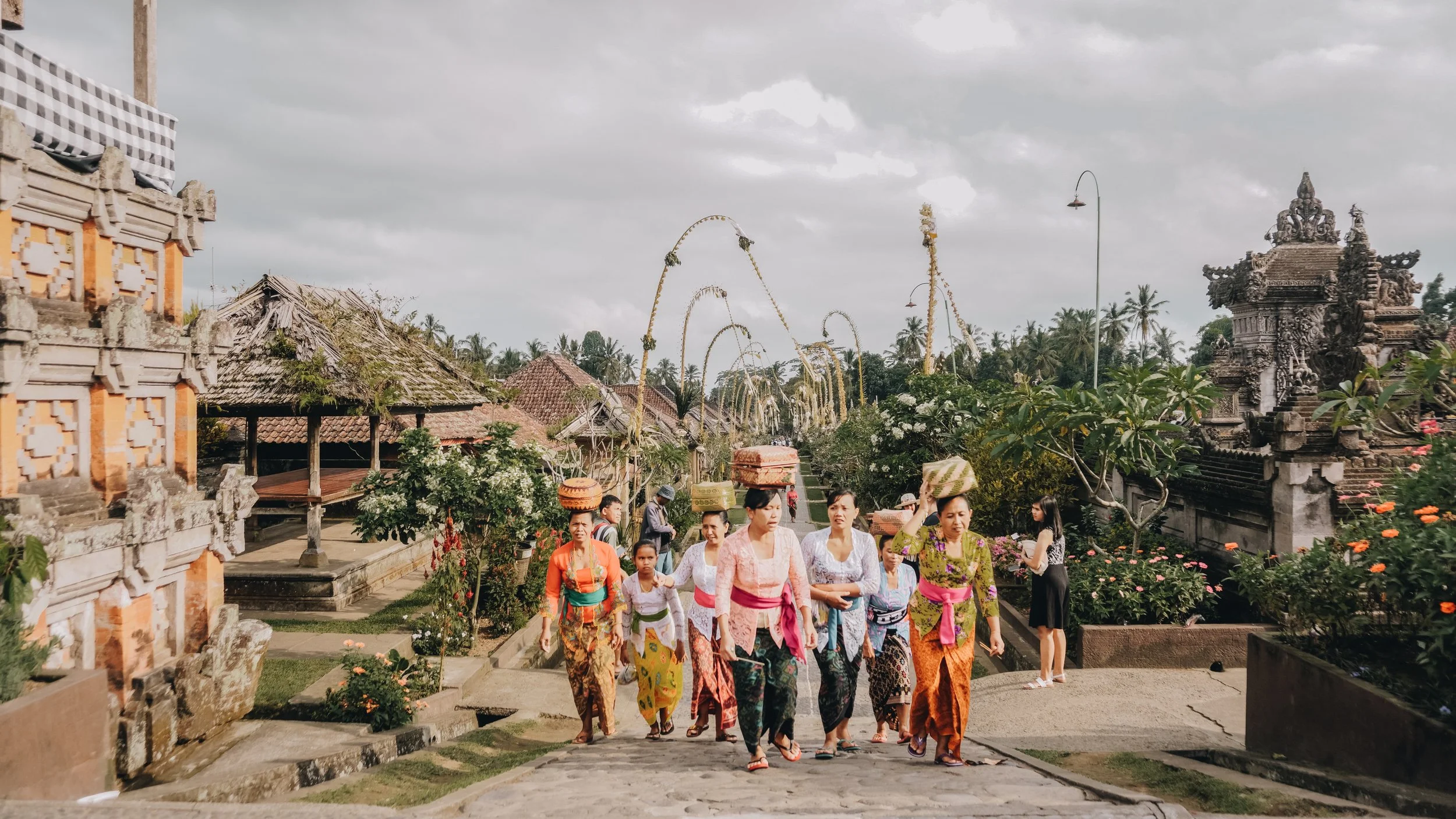Balian Healing
Sickness in Bali is almost universally viewed as the result of a state of disharmony between the individual and his surroundings. When stricken by misfortunes or ills, the balinese see a special kind of doctor. A balian is often defined as ‘traditional healer’.
Experience the transformative power of traditional Balinese healing techniques guided by skilled Balian healers
With the Healers & Teachers app, you gain access to a wealth of resources, experienced practitioners, and a supportive community
Balian healing, also known as Balinese traditional healing or Balinese shamanism, is a type of traditional medicine practiced in Bali, Indonesia. The term "Balian" refers to a traditional healer or shaman who uses their knowledge of herbal medicine, massage, and energy healing to help individuals with physical, emotional, and spiritual issues.
Balian healing is deeply rooted in Balinese culture and traditions and is often sought out by locals and tourists alike. The process involves a combination of physical and spiritual healing techniques, including massage, meditation, prayer, and the use of natural remedies such as herbs and plants.
One of the main benefits of Balian healing is that it provides a holistic approach to healing, addressing not only physical symptoms but also emotional and spiritual imbalances. This approach can be particularly helpful for those dealing with chronic pain, stress, anxiety, depression, and other mental health issues.
How does Balian Healing work?
Balian healing is a complex practice that involves a combination of physical, emotional, and spiritual healing techniques. The exact method used by a Balian healer can vary, but there are some common elements to the practice.
Firstly, Balian healers believe that illness and disease are often caused by imbalances in the body, mind, and spirit. They seek to identify the root cause of these imbalances and use a variety of techniques to restore balance and promote healing.
One of the key techniques used in Balian healing is massage. The healer may use a combination of acupressure, reflexology, and other massage techniques to relieve physical tension, improve circulation, and promote relaxation. Another important aspect of Balian healing is the use of natural remedies such as herbs, plants, and other natural materials. Balian healers have a deep knowledge of traditional Balinese medicinal plants and their uses, and may create customized remedies for their patients based on their specific needs.
Balian healers also use meditation and prayer to connect with the spiritual realm and channel healing energy. They may also perform rituals and ceremonies to cleanse the body and mind of negative energy and promote positive energy flow. The healing process is often tailored to the individual, with the Balian healer taking into account the person's unique physical, emotional, and spiritual needs. Some healers may also provide guidance on diet and lifestyle changes to support overall health and well-being.
What are the benefits of seeing a Balian Healer?
It's important to note that Balian healing is not a substitute for medical treatment, and individuals should seek medical advice for any serious health conditions. However, many people find Balian healing to be a complementary and effective approach to improving their overall health and well-being.
Holistic healing: Balian healing takes a holistic approach to healing, addressing not only physical symptoms but also emotional and spiritual imbalances. This approach can be particularly helpful for those dealing with chronic pain, stress, anxiety, depression, and other mental health issues.
Natural remedies: Balian healers use natural remedies such as herbs and plants to promote healing, which can be gentler on the body than synthetic drugs and medications.
Personalized treatment: Balian healing is often tailored to the individual, with the Balian healer taking into account the person's unique physical, emotional, and spiritual needs. This personalized approach can help ensure that the treatment is effective and meets the individual's specific needs.
Relaxation and stress relief: Many of the techniques used in Balian healing, such as massage and meditation, can promote relaxation and stress relief, helping to reduce tension and promote a sense of calm.
Cultural experience: Balian healing is deeply rooted in Balinese culture and traditions, and experiencing this type of healing can be a unique and enriching cultural experience.It's important to note that these applications are still being researched and are not appropriate for everyone. Psychedelic-assisted therapy should only be administered under the guidance of trained professionals in a controlled setting.
What are the different types of Balian Healers?
There are several different types of Balian healers in Bali, each with their own areas of expertise and techniques. Here are some of the main types:
Balians Usada: These are traditional Balinese healers who specialize in herbal medicine. They use a wide variety of medicinal plants to treat a range of physical and emotional ailments.
Balians Pitik: These are traditional Balinese healers who specialize in massage and bodywork. They use a variety of massage techniques, acupressure, and reflexology to relieve tension and promote relaxation.
Balians Jero: These are traditional Balinese healers who specialize in spiritual healing. They use prayer, meditation, and energy healing to address emotional and spiritual imbalances.
Balians Taksu: These are traditional Balinese healers who specialize in energy healing. They use a variety of techniques to balance the body's energy and promote healing.
Balians Laler: These are traditional Balinese healers who specialize in diagnosing illnesses and providing guidance on treatment. They use intuition and traditional methods to determine the underlying cause of an illness.
Balians Mantra: These are traditional Balinese healers who specialize in chanting and the use of mantras. They use sound vibrations to promote healing and balance.
What Can I Expect in a Typical healing session?
The exact details of a Balian healing session can vary depending on the healer and the individual's specific needs. However, here are some general elements that you can expect in a typical Balian healing session:
Consultation: The session will typically begin with a consultation where the healer will ask about your physical, emotional, and spiritual health, and may also ask about your medical history and lifestyle.
Diagnosis: The healer may use various traditional methods to diagnose any imbalances or illnesses in your body, mind, or spirit. This may involve examining your pulse, examining your physical symptoms, and asking you questions about your emotional and mental state.
Treatment: Once the healer has identified any imbalances or illnesses, they will begin the treatment process. This may involve a combination of massage, energy healing, herbal remedies, and spiritual practices such as prayer and meditation.
Relaxation: Many of the techniques used in Balian healing, such as massage and meditation, can promote relaxation and stress relief, helping to reduce tension and promote a sense of calm.
Follow-up: After the session, the healer may provide guidance on diet and lifestyle changes to support overall health and well-being. They may also recommend follow-up sessions or additional treatments if needed.
It's important to note that the experience of a Balian healing session can be deeply personal and transformative. It's important to approach the session with an open mind and be willing to embrace the healing process. Additionally, it's important to do your research and find a reputable practitioner who has been trained and certified in traditional Balinese healing techniques.
Who Might Want to Try Balian Healing? Are There Any Risks?
Balian healing can be beneficial for anyone looking to improve their physical, emotional, and spiritual well-being. However, it may be particularly helpful for those dealing with chronic pain, stress, anxiety, depression, and other mental health issues.
It's important to note that Balian healing is not a substitute for medical treatment, and individuals should always seek medical advice for serious health conditions. Additionally, there are some potential risks associated with Balian healing, such as the use of unregulated herbal remedies and the possibility of misdiagnosis. Here are some factors to consider before trying Balian healing:
Medical history: If you have a serious medical condition, it's important to consult with your doctor before trying Balian healing to ensure that it's safe for you.
Allergies: If you have any allergies, it's important to inform your healer before the session so that they can avoid using any herbs or plants that may trigger an allergic reaction.
Expectations: It's important to have realistic expectations about the healing process, as it may take multiple sessions to see results. Additionally, not all healers may be able to provide a diagnosis or cure for every ailment.
Reputable practitioner: It's important to do your research and find a reputable practitioner who has been trained and certified in traditional Balinese healing techniques. There are many healers in Bali who may not have the necessary training or experience, so it's important to find a practitioner who has a good reputation and can provide references.
Balian healing can be a powerful and transformative experience for those seeking a holistic approach to healing. However, it's important to approach the process with caution, do your research, and consult with your doctor before trying any new healing practice.
What is the appropriate protocol when visiting a Balian Healer?
When visiting a Balian healer, it's important to show respect for their traditions and culture. Here are some general guidelines to follow:
Dress appropriately: When visiting a Balian healer, dress modestly and respectfully. Avoid wearing revealing clothing or clothing with offensive slogans or imagery.
Show up on time: Arrive on time or a few minutes early for your appointment. If you are running late, call ahead to let the healer know.
Be respectful: Show respect for the healer's traditions and practices. Listen carefully to their instructions and follow their guidance during the session.
Be honest: Be honest about your medical history and any conditions or concerns that you have. This will help the healer provide an accurate diagnosis and treatment.
Follow instructions: Follow the healer's instructions carefully, both during the session and afterward. This may include dietary recommendations, lifestyle changes, and follow-up appointments.
Avoid intoxicants: It's important to avoid using alcohol, drugs, or other intoxicants before and after the healing session. These substances can interfere with the healing process and may be disrespectful to the healer.
Respect privacy: Respect the privacy of other clients and the healer. Avoid discussing other clients or sharing personal information about the healer or their practices.
Shall i take any offerings to the healer? or do they accept money?
It's common practice in Bali to bring a small offering, called a canang, when visiting a healer or temple. The canang is typically a small woven basket filled with flowers, rice, and other small items, and is meant as a symbol of gratitude and respect.
When visiting a Balian healer, it's a good idea to ask if they would appreciate a canang offering. Some healers may have specific preferences or requirements for the offering, so it's best to ask in advance.
In terms of payment, many Balian healers do accept money for their services. It's important to discuss the cost of the session with the healer in advance so that there are no misunderstandings or surprises. It's also a good idea to have the appropriate amount of cash on hand to pay for the session.
Overall, bringing a canang offering and paying for the session are both common practices when visiting a Balian healer. By showing respect and gratitude for the healer's services, you can help create a positive and respectful healing experience.
Healing and Growth begins with you
Embark on a transformative path of healing and well-being with Balian Healing. Gain profound insights, relief, and a deeper connection with yourself through the authentic practices of Balinese healers. Begin your healing journey today with The Healers & Teachers app.
The Healers & Teachers app provides:
Authentic Balinese healing traditions: Discover the unique methods of Balian healers, including massage, herbal remedies, energy healing, and spiritual practices. Tap into centuries-old wisdom to address physical, emotional, and spiritual imbalances.
Experienced practitioners: Connect with reputable Balian healers who have been trained and certified in traditional healing techniques. Benefit from their expertise and personalized guidance to enhance your healing journey.
Supportive community: Connect with a community of individuals who appreciate the transformative power of Balian Healing. Share experiences, insights, and guidance as you embark on your healing journey.












